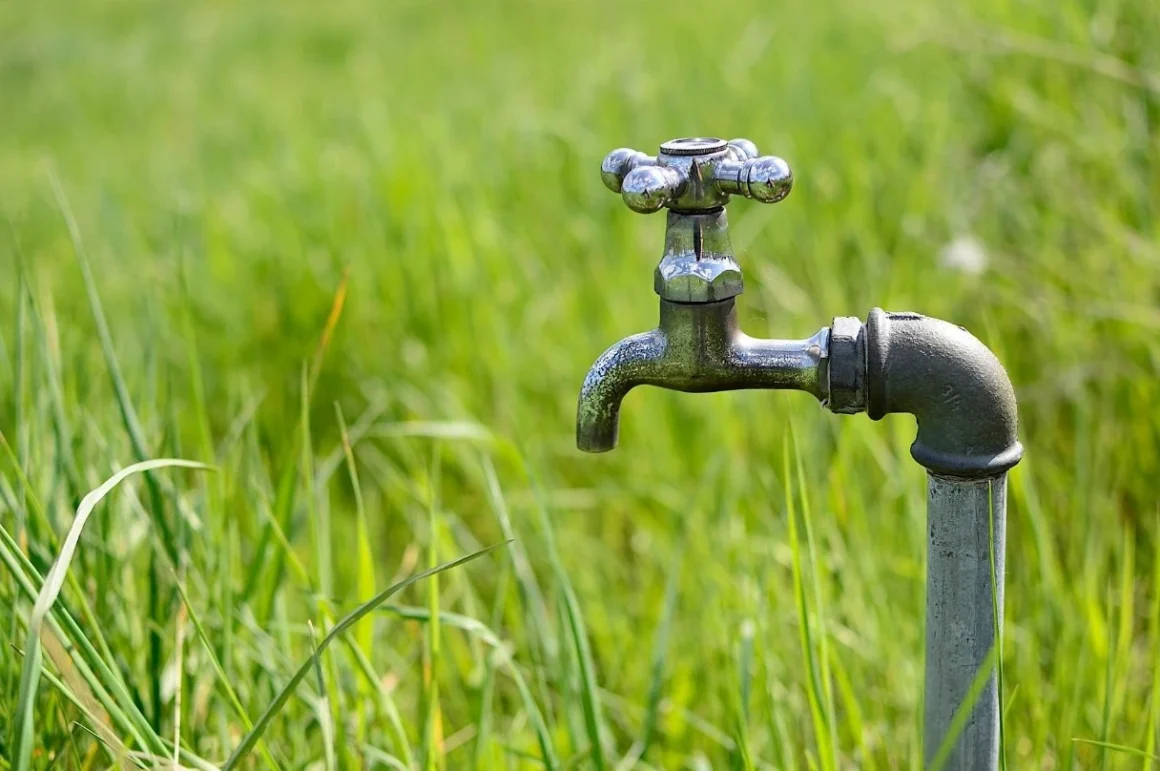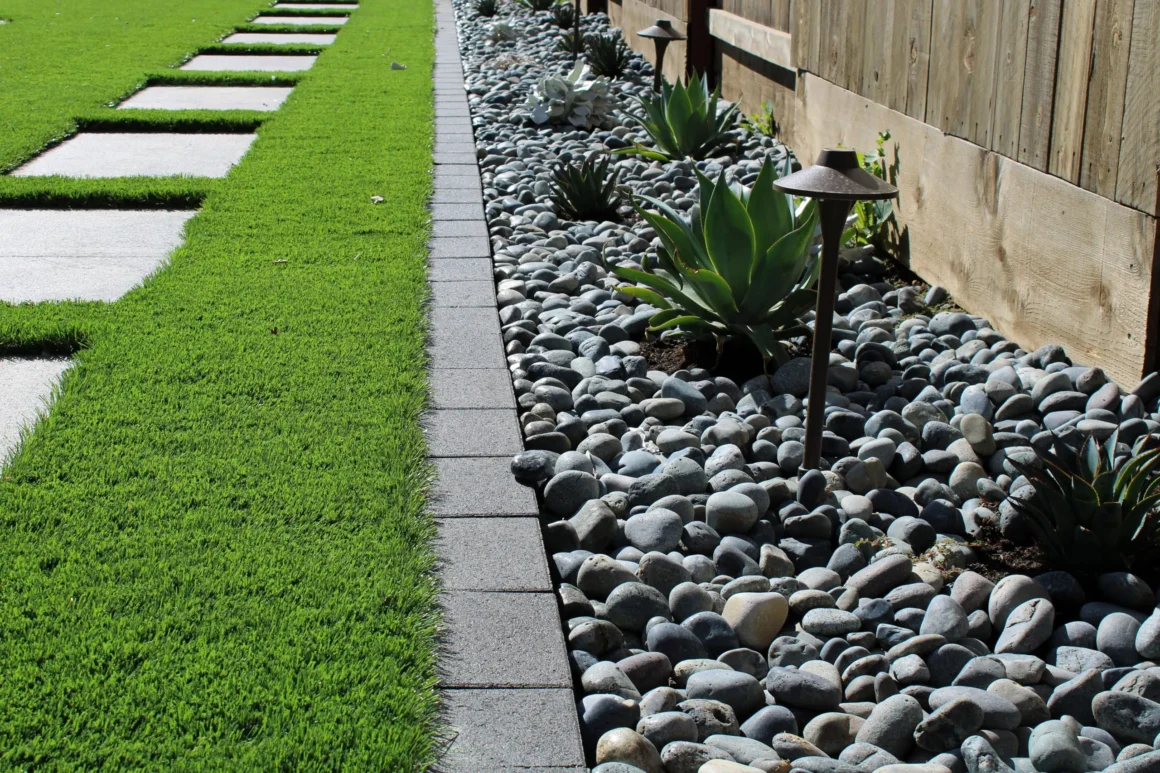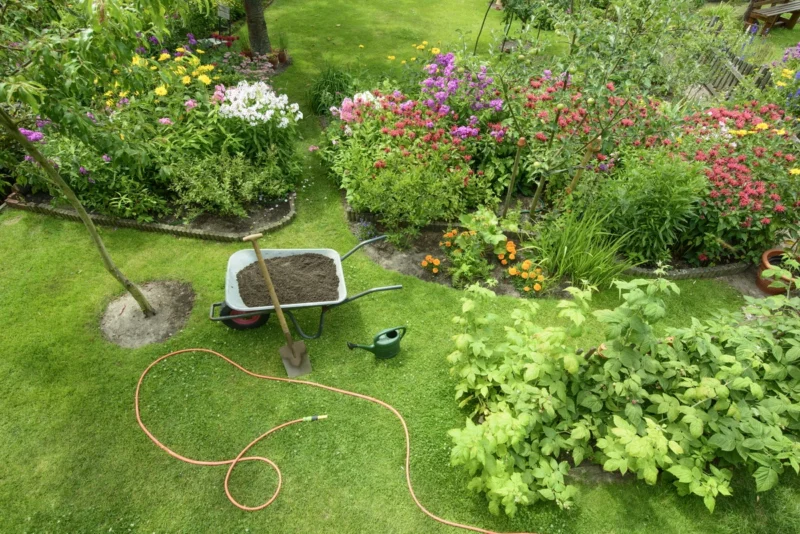In a world where Mother Earth needs us more than ever, we environment lovers are always on the lookout for ways to reduce our carbon footprint. And what better way to do so than by making your entire home eco-friendly?
Or maybe you’re not that big on eco-friendliness. Either way, you’d still want to make your landscape eco-friendly. Here’s why.
Eco-friendly practices translate to lower maintenance needs and cost savings. An eco-friendly landscape will not only reduce water usage, but also employ renewable energy, reduce energy usage, and many a time even make your landscape look cooler and more aesthetic.
There are many ways to achieve this, from careful plant selection to energy-efficient LED lights. Today, we’re going to be diving deep into the ways to make your landscape more eco-friendly and reap all the benefits that come with it.
Eco-Friendly Landscaping: 4 Must-Haves

The key to a sustainable garden is harmony with the local environment. This starts with the most basic component that makes up every garden, lawn, and backyard – plants.
1. Embracing Native Plants
Needless to say, perhaps one of the most essential components of an eco-friendly backyard is your choice of flora. And there’s no better option than native plants.
Native plants are plants that can naturally be found in your region. These plants have evolved to the local environment’s conditions and are well-adapted to the local rainfall patterns and soil moisture levels.
In other words, the amount of watering you have to do is minimal, since all these plants need to grow and survive is natural rain. Plus, these native plants have also developed a resilience to the local pests and diseases. As such, there isn’t much need for chemical fertilizers and pesticides, further reducing the amount of maintenance you need to do.
In addition, native plants even help the local ecosystem and enhance biodiversity. They are naturally a vital part of the food chain and provide nectar, pollen, and seeds that are part of the local wildlife’s diet.
In short, native plants help conserve water, reduce chemical use, and support biodiversity.
Some ways to find these native plants include:
- Consulting local experts. Landscaping companies, nurseries, and botanical gardens can all offer invaluable advice.
- Community groups. Local gardening clubs or online forums can be a wealth of knowledge.
- Native Plant Sales and Events. These offer the perfect opportunity to see a variety of native plants and purchase them.
2. Implementing Water Conservation Techniques

Aside from native plants, there are techniques to more effectively target water conservation. First up is rainwater harvesting. This is the simplest and most direct way, but it remains highly effective nonetheless. There are various ways to do this.
You can use a bucket or basin to collect water, or for a more sophisticated way, you can install a rain barrel at the bottom of your gutter’s downspout. Rainwater is free from the chlorin found in tap water too, and is thus healthier for your plants.
Next, you can employ drip irrigation systems. These systems deliver water directly to the base of your plants, thus keeping evaporation and runoff to a minimum. These are without question more efficient than traditional sprinkler systems, which often waste some water, albeit a small amount, by spraying onto walkways and non-absorbent surfaces.
Drip irrigation ensures that water is delivered exactly where it’s needed, at the right rate for the soil to absorb, so no water is wasted. Your plants also grow more healthily. To install a drip irrigation system, contact your local landscaper.
Finally, xeriscaping is the ultimate water conservation technique. Basically, you would create a landscape that can function on very little water by:
- Employing drought-resistant plants that need minimal watering and can thrive in dry conditions
- Mulching
- Soil that can retain rainwater
Xeriscaping is a large-scale project that entails changing up your entire garden or backyard, so you will need to hire a professional landscaper for the job.
3. Utilizing Eco-Friendly Materials and Designs
While seemingly obvious, many homeowners actually do not opt for environmentally-friendly materials, simply because it didn’t occur to them at the time. Landscapers usually won’t specifically ask if you’d prefer those materials, but will show you their options upon request.
Make sure to request environmentally-friendly materials for your next landscaping project.
As for design, once again, you will need to specifically request for the options from your local landscaper. In some cases, they may not even know what eco-friendly designs are, so you’ll need to let them know. Here are some designs you can request your landscaper use:
- Permeable paving: By going for permeable paving options for your walkways and patios, rainwater can seep through and help water your plants. This not only reduces your water usage, but also prevents erosion.
- Composting systems: By recycling organic waste into compost, you’re helping to reduce landfill waste, not to mention enrich your soil.
4. Leveraging Technology

Technology has come a long way, and there are now incredible systems for environmental-friendliness.
One of the most impactful technologies is smart irrigation systems. By utilizing sensors and weather forecasts, smart irrigation systems can optimize watering schedules to give plants just the right amount of water at the right times when they need it.
By combining this with existing water-conserving drip irrigation systems, water wastage can be cut down to levels never achieved before.
Other technologies include solar-powered lights, and even garden accessories. We all know what solar-powered lights are, so I won’t go into any detail there, but solar-powered garden accessories are really impressive.
Not only do they use renewable energy, but they completely cut out the need for electrical wires, further reducing the carbon footprint.
Finding A Good Local Landscaper
When looking for landscaping services, it goes without saying that you need to find a good landscaper. Here’s how to assess whether a landscaper will get the job done well:
- Ask for referrals. Ask your family, neighbors, and friends for recommendations. The best indicator of a landscaping company’s value is what others are saying about it, not what it says about itself on its website. And when people like your family and friends, who have your best interests at heart, recommend a certain company, you can be sure that their recommendation is trustworthy.
- Online reviews. The next best indicator of a company’s services is online reviews. And make sure to be objective, don’t focus solely on the positive or negative reviews. I’d recommend looking at the worst reviews, because if it’s happened before, it can happen again. At the same time, see if the business owner has made attempts to reply to and settle with unsatisfied customers.
- Review their portfolio.Once you’re sure that a company is reliable and trustworthy, the next thing to do is to see their portfolio of past projects. Companies will of course showcase their best projects, but it’s still good to see what a company is capable of, as well as their landscape design style.
Conclusion

Eco-friendliness doesn’t just help Mother Earth, it helps you too. You spend less on electricity and water bills, spend less time on maintenance, your plants grow better, and you feel better about yourself for being a great person who cares about the environment.
While focusing on eco-friendly landscaping techniques to improve your outdoor environment, it’s equally important to maintain a healthy indoor environment. For those dealing with pest issues, particularly bed bugs, Columbus’s Premier Bed Bug Exterminator provides environmentally conscious pest control solutions that align with your green living standards, ensuring both your garden and home are safe and sustainable.
If you’re not willing to make a huge investment, start small. Put out a bucket to collect rain water, plant a few native plant seeds, or try composting your kitchen scraps. The first step is always the hardest, but once you get started, you’ll be much more motivated to continue.
Don’t wait any longer, start today, because tomorrow’s fruit will be a result of today’s seed!


